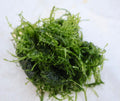10 Tips to Breed Guppies Faster (Based on Thousands of Guppy Breeding Experiences)
When we say guppies, we’re referring to both common guppies and Endler guppies — the two are basically the same, and these breeding tips are going to work equally well for both.
Guppy Breeding Tip 1: Get a Good Female-to-Male Ratio
This is very important because for guppies, you don't want to overwhelm the females with too many males — it will definitely stress them out.
-
Recommended ratio: 1 male per 2 to 3 females
-
This ensures females each get turns mating, and none of them get overly stressed.
Too many males cause stress, and that's something we definitely want to avoid. You can have more females than males, but avoid the opposite.
Guppy Breeding Tip 2: Remove Any Would-Be Predators
Predators are one of the major reasons why guppies don't breed.
-
Many community fish will go after baby guppies.
-
Even slightly aggressive tetras or hungry shrimp may eat fry.
The female guppy can sense if the tank is unsafe. Removing predators also reduces stress and fosters a healthier environment. If you're serious about breeding, definitely remove predators.
Guppy Breeding Tip 3: Increase Water Temperature
Ideal range: 78–82°F (25–28°C)
This mimics summertime conditions when guppies breed in the wild. Increasing the temperature:
-
Boosts metabolism
-
Encourages breeding
-
Helps guppies grow faster and produce more babies
Only increase temp when breeding. Keeping guppies in lower temperatures when not breeding can help them live longer.
Guppy Breeding Tip 4: Feed Protein-Rich Foods
Diet is critical. If guppies eat well, it will help breeding a lot.
Examples:
-
Bloodworms
-
Baby brine shrimp
-
Egg yolk (high in protein and very nutritious)
Feeding high-quality, protein-rich food keeps them healthy and supports reproduction.
Guppy Breeding Tip 5: Temporarily Separate Males and Females
Then reintroduce them for breeding.
This:
-
Increases breeding enthusiasm
-
Simulates natural breeding cycles
-
Creates urgency to reproduce
This method also helps control breeding cycles if you're managing multiple tanks.
Guppy Breeding Tip 6: Know When They're Going to Breed
Watch for signs in female guppies:
-
Gravid spot becomes very large and dark.
-
Large belly that continues to grow
-
Frozen swimming behavior or sensitivity
These are signs they're close to giving birth. Under ideal conditions, females can breed once every 30–40 days.
Knowing the timing can help you prepare a breeder tank or separate aquarium.
Guppy Breeding Tip 7: Provide Plenty of Hiding Spots
This is key if you want to raise fry in the main tank.
-
Reduces stress for pregnant females
-
Encourages them to release fry
-
Helps baby guppies survive predation
Best plants for hiding:
-
Guppy grass
-
Hornwort
-
Java moss
-
Water wisteria
These grow fast, provide shelter, and also oxygenate the tank and help filter water naturally.
Guppy Breeding Tip 8: Balance Out the Number of Livestock
Too many fish or shrimp can affect your guppy's ability to breed.
Overstocking leads to:
-
High ammonia
-
Imbalanced pH
-
Unhealthy environment
Minimize other livestock in the tank. Furthermore, if too many guppies are already present, breeding may slow down.
Guppy Breeding Tip 9: Keep Male Guppies with Larger Females
This has been proven to boost breeding for several reasons:
-
Larger females carry more offspring.
-
They have better nutritional reserves for a healthier pregnancy.
-
Male guppies are more inclined to breed with larger females.
When buying fish, choose larger females for better results.
Guppy Breeding Tip 10: Gradually Extend the Lighting Hours
This mimics summertime — when guppies naturally breed more.
-
Combine longer lighting hours with higher temperature.
-
Trick guppies into thinking it’s breeding season.
-
Just extend lighting by 1–2 hours.
A simple yet powerful trick to get them in the mood to reproduce!
Quick Recap
-
Maintain a 1:2 or 1:3 male-to-female ratio.
-
Remove predators from the tank.
-
Increase temperature to 78–82°F when breeding.
-
Feed protein-rich foods
-
Separate, then reintroduce males and females.
-
Know when they’re close to breeding.
-
Provide hiding spots and live plants.
-
Keep the tank properly stocked.
-
Choose larger females.
-
Extend lighting hours to mimic summer.
















